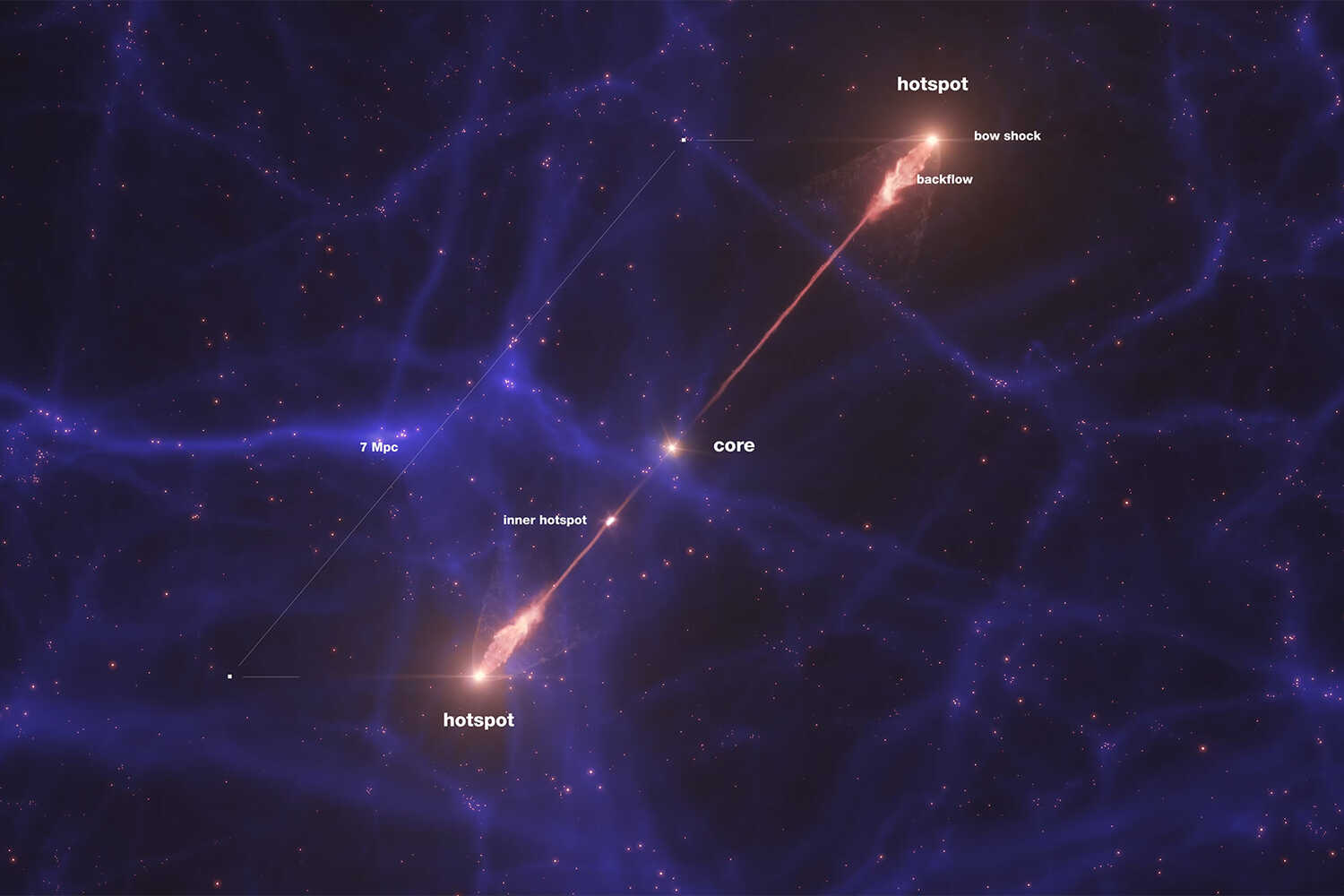Who knew a dragon’s tongue could be so long?
Astronomers announced last week that they had discovered a black hole spitting energy across 23 million light-years of intergalactic space. Two jets, shooting in opposite directions, compose the biggest lightning bolt ever seen in the sky — about 140 times as long as our own Milky Way galaxy is wide, and more than 10 times the distance from Earth to Andromeda, the nearest large spiral galaxy.
Follow-up observations with optical telescopes traced the eruption to a galaxy 7.5 billion light-years away that existed when the universe was less than half its current age of 14 billion years. At the heart of that galaxy was a black hole spewing energy equivalent to the output of more than a trillion stars.
“The Milky Way would be a little dot in these two giant eruptions,” said Martijn Oei, a postdoctoral researcher at the California Institute of Technology. Dr. Oei led the team that made the discovery, which was reported in Nature on Sept. 18 and announced on the journal’s cover with an illustration reminiscent of a “Star Wars” poster. The astronomers have named the black hole Porphyrion, after a giant in Greek mythology — a son of Gaia — who fought the gods and lost.
The discovery raises new questions of how such black holes could affect the evolution and structure of the universe.
“Astronomers believe that galaxies and their central black holes co-evolve, and one key aspect of this is that jets can spread huge amounts of energy that affect the growth of their host galaxies and other galaxies near them,” said S. George Djorgovski, an astronomer at Caltech who was part of the research team. “This discovery shows that their effects can extend much farther out than we thought.”
